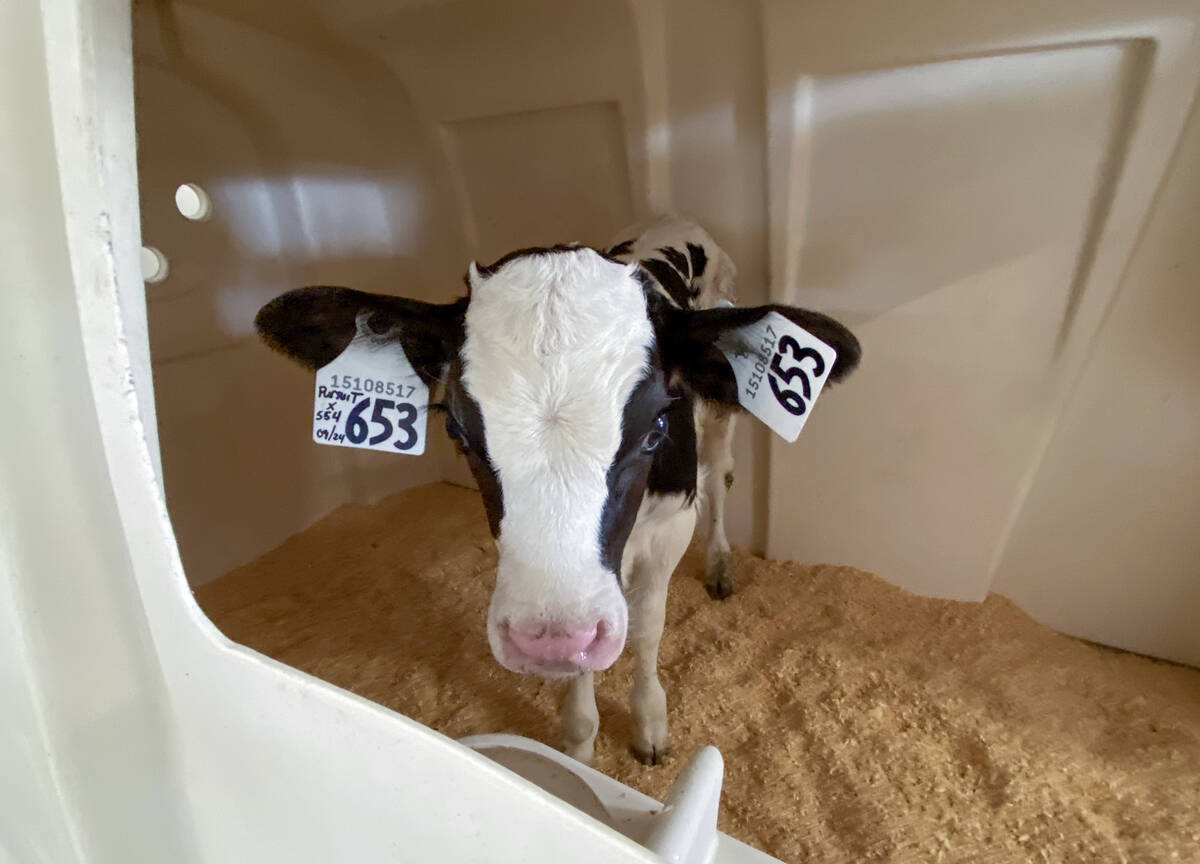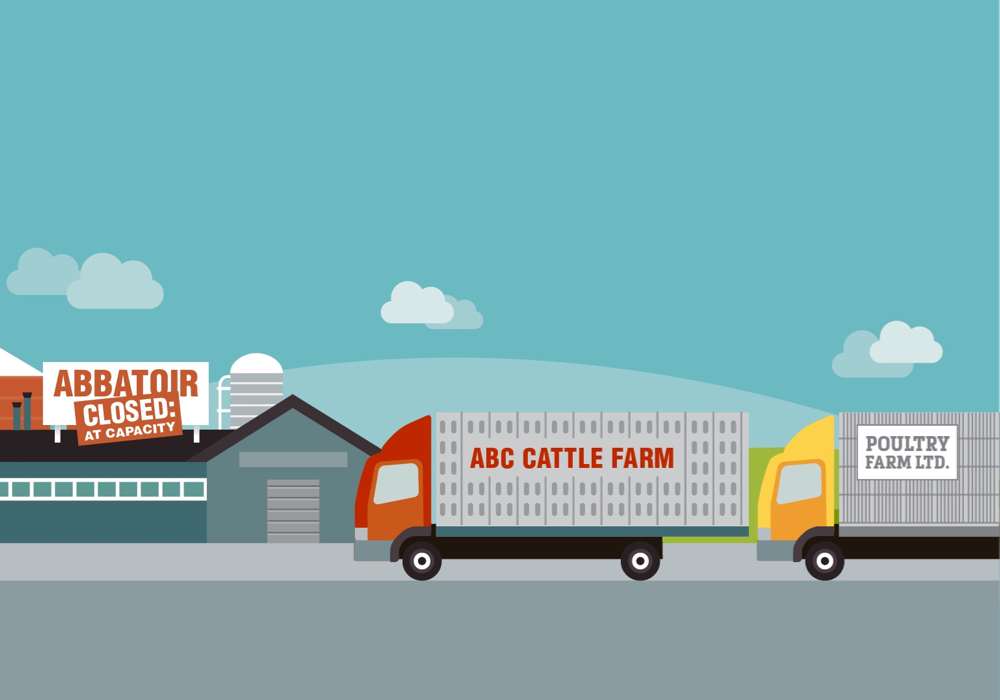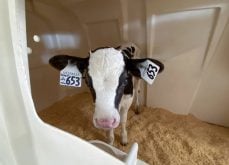The organization representing smaller-scale meat processors in Ontario is creating a growth strategy to help draw new badly needed investment and workers to the sector.
“We hope to show both government and smart investors that the meat sector is… a safe and smart place to make investments if you want to see a return,” said Meat and Poultry Ontario (MPO) executive director Franco Naccarato, explaining the organization’s Meat and Poultry Growth Strategy.
A farmer survey is one of four first-phase elements.
Read Also

Lactanet turns methane expertise into business opportunity
Lactanet’s new fee-for-service breeding tool initiative to reduce greenhouse gas emissions in Canadian and Swiss Holstein herds will launch in April 2026.
Why it matters: Ontario has long been underserved in local meat processing, as increasing costs and regulations resulted in closure of many of abattoirs.
Naccarato says the sector has “a long history and stable companies that have great potential for growth…That’s the story we want to tell with this research.”
Survey respondents are asked to predict their future needs for local abattoir or poultry-processing services, and to identify challenges they faced in recent months having their livestock killed, cut and packaged.
Small-scale processors saw demand for their services spike in the wake of the COVID-19 pandemic due to staff outbreak-related slowdowns at larger-scale plants and to a growing market for direct farmer-to-consumer meat sales.
“We see MPO’s role as the catalyst to lead the change, co-ordinating with government and other industry stakeholders to build the strategy collaboratively,” Naccarato said.
The growth strategy was launched just before the pandemic in early 2020, and followed what Naccarato described as “an informal survey of MPO members” and in the wake of “a few incidents that happened in 2019 that really highlighted the vulnerabilities in the sector.”
The closure of Barrett Hides left an estimated 93 per cent of provincially licensed abattoirs without a hide buyer and “had direct impact on the profitability of abattoirs, particularly the smaller plants that are not as efficient as some of the bigger plants.”
The cancellation of Toronto-based Ryding Regency’s meat processing licence by the Canadian Food Inspection Agency left “thousands of animals backlogged” and had “an immediate impact on the farming sector,” said Naccarato.
COVID exposed lack of abattoir capacity
Those vulnerabilities continued to reveal themselves once COVID-19 hit.
“We are seeing additional pressures on local and regional abattoir capacity all across Canada,” said a Sept. 4 letter from National Farmers Union (NFU) President Katie Ward to the federal government, outlining the farm organization’s concerns about shortcomings of the Emergency Processing Fund aimed at helping food processors respond to shifting post-pandemic realities.
“There has been an increase in the number of Canadians who have decided to raise a few animals for home consumption; hunters will be bringing animals in for cut and wrap for their own use; farms have, in response to COVID, changed their operations from commodity production to direct-to-consumer sales… and long-time local producers have higher demand as a result of consumption shifts due to COVID,” the letter said.
“As a result, abattoirs are already fully booked for the fall season, many are booking into April 2021 and some are already fully booked for 2021.”
Hilary Moore, a mixed organic livestock and vegetable producer in Lanark, is a provincial NFU board member and is part of an NFU-Ontario committee on the issue.
She says the committee aims to identify what keeps the abattoir sector from thriving and to identify solutions.
Finding a more efficient system
The MPO growth strategy’s first phase is expected to be completed by mid-May. Other parts of the strategy will include:
- An analysis of Statistics Canada trends to help determine future growth potential.
- A survey of provincial abattoirs about their challenges and opportunities.
- Outreach to farmers and abattoirs to explore how they currently work together.
There may be potential in the short term for farmers and abattoir operators to “be more efficient at using the existing available inventory of harvest times,” says Naccarato.
The survey of abattoirs, will, to some extent, revisit ground covered a few months ago by the NFU-O.
According to Moore, a question-and-answer survey saw 33 provincially licenced facilities respond out of a total of 110 requests sent to provincial and federal plants.
The survey helped inform some of her committee’s recommendations. Three key barriers identified in that survey were: burdensome regulations slowing down production, labour shortage and unhelpful relationships between inspectors and abattoir owners/employees.
“A low profit margin also makes it difficult for many abattoirs to invest in upgrades to bottlenecks in production,” Moore said the NFU-O abattoir survey found.
This low-margin reality could complicate matters, she added, if efforts to enhance the attractiveness of meat-cutting jobs in the workforce translate into higher wage demands on owners.
Attracting labour is a key concern
Workforce capacity is among the sector’s most significant current challenges, says Naccarato. Indeed, this was true even before COVID-19: A labour market study conducted in 2017 by Food Processing Skills Canada, he says, showed a 13 per cent job vacancy rate.
“In Ontario, that translates to approximately 2,400 vacant jobs and equates to $1.2 billion in lost productivity.
“A lot of work needs to be done in this area.”
A domestic workforce strategy is being developed, said Naccarato, tackling such topics as attracting talent, training and the use of technology and automation.
“We also need to look at working with government to solve immediate needs through foreign worker programs.”
The livestock producer survey, though, turns the focus away from challenges like workforce or lack of capital and instead addresses potential growth opportunities. Naccarato says even though MPO doesn’t represent farmers, the organization aims to determine how best its members can support the future needs of their farming customers.
MPO has seen positive results to its lobbying efforts.
“The government has been listening and responding,” Naccarato said. “They led the charge with initiatives to reduce regulatory burden.. (and) there have been several funding opportunities for abattoirs and meat processors specifically for increasing food safety, responding to COVID needs and most recently to grow capacity.”
Naccarato added that MPO has had “overwhelming support” for the Meat and Poultry Growth Strategy from general farm organizations and livestock sector groups.















